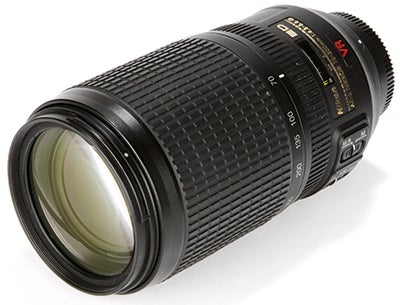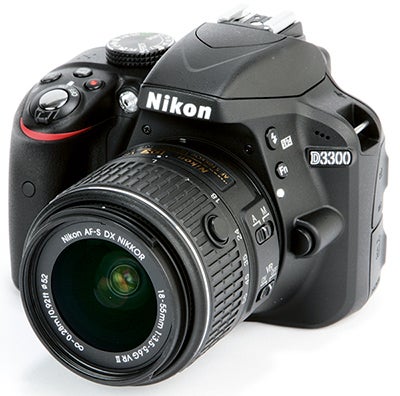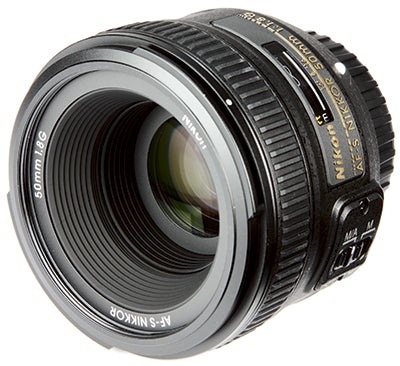A kit lens is a great starting point, but what should you be looking to buy next? We list some of the options for entry level lenses.
Most people buy their first DSLR or compact system camera as a bundle, complete with kit lens. This type of lens is a good starting point, but after a while many photographers will want to explore other possibilities. In our advanced lens buying guies we look at some of the lenses to consider for specific types of photography, but if you are just getting a feel for what you want to do, here are our recommendations for a the best entry level lenses.
Remember, we have listed the focal lengths for a camera with a 35mm full-frame sensor. Use the conversion table on page 7 to find the equivalent focal length for your camera and system.
Best entry level lenses
28-70mm f/3.5-5.6 kit lens
Kit lenses come in various guises, depending on the system and sensor size of your camera. If you are just starting out, the chances are you have a camera with an APS-C-sized sensor, so the kit lens will generally be an 18-55mm f/3.5-5.6, or a 14-42mm f/3.5-5.6 if you have a Micro Four Thirds camera. We have listed some kit-lens options below. It is worth noting that if you have a Pentax camera there is a weather-resistant (WR) version of the kit lens, so if possible try to choose this one when buying a kit. If you have bought a model body only, then as well as the proprietary options the Sigma 17-70mm f/2.8-4 is worth considering as an affordable alternative, as it offers a slightly larger maximum aperture.
The humble kit lens makes it possible to take wideangle images at the shortest focal length, while the longest is useful for isolating subjects, such as when taking portraits. Generally, the maximum aperture of these lenses isn’t too large, which helps to keep their cost down, but they aren’t always of the highest optical quality. However, there are ways that you can improve their performance. For the sharpest images, stop the aperture down by at least 2 stops from the largest setting, and try manually focusing using live view. It may take a little longer, but for shots like landscapes it can make a big difference.
Kit lens options
Canon EF-S 18-55mm f/3.5-5.6 IS II – Price: £145
Nikon DX AF-S DX Nikkor 18-55mm f/3.5-5.6G VR – Price: £140
Olympus M.Zuiko Digital ED 14-42mm f/3.5-5.6 EZ – Price: £270
Pentax SMC DA 18-55mm f/3.5-5.6 AL WR – Price: £160
Sigma 17-70mm f/2.8-4 DC Macro OS HSM | C – Price: £330
Sony DT 18-55mmf/3.5-5.6 SAM DT II – Price: £150
70-300mm f/4-5.6
There will come a time when a kit lens doesn’t have quite the zoom you need to really isolate a subject, and this is when you need a telephoto zoom. The obvious starting point is a 70-300mm f/4-5.6, or a 55-200mm if you have a camera with an APS-C-sized sensor.
The 70-300mm f/4-5.6 lenses are generally manufactured with entry-level users in mind, so are reasonably priced. Over the years, there have been a couple of these lenses from various manufacturers that haven’t been very good. However, improvements in lens design and manufacture mean that even though they are reasonably priced, the current lenses are pretty good.
This type of lens is great for trying some basic wildlife or sports photography, although don’t expect to get too close. Also, when combined with the 28-70mm kit lens, you will have lenses that will cover you from 28-300mm, making your basic kit useful for the majority of images you would want to take.
70-300mm lens options
Canon EF 70-300mm f/4-5.6 IS USM – Price: £380
Nikon AF-S VR Zoom-Nikkor 70-300mm f/4.5-5.6G IF-ED FX – Price: £420
Nikon AF-S DX VR Zoom-Nikkor 55-200mm f/4-5.6G IF-ED – Price: £270
Panasonic Lumix G Vario 45-150mm f/4-5.6 Asph Mega OIS – Price: £200
Pentax smc DA 50-200mm f/4-5.6 ED WR – Price: £220
Sigma 70-300mm f/4-5.6 APO DG Macro – Price: £150
Sony DT 75-300mm f/4.5–5.6 – Price: £690
50mm f/1.8
This lens is a must for any photographer, and I would recommend it as the second lens on any system. Lenses of this type are good value for money, and are often the cheapest lens in any manufacturer’s range. They offer a very large aperture for shooting shallow depth of field shots and for shooting in low-light conditions. Better still, they are usually among the sharpest lenses available for any system.
If you are shooting on a camera with an APS-C-sized sensor, look out for a 35mm f/1.8 lens. However, the 50mm f/1.8 on an APS-C sensor is equivalent to 75mm, which makes this lens a great option for those wanting to shoot portrait images on a budget.
50mm lens options
Canon EF 50mm f/1.8 II – Price: £90
Nikon AF-S Nikkor 50mm f/1.8G – Price: £140
Olympus M.Zuiko Digital ED 25mm f/1.8 – Price: £300
Pentax 50mm f/1.8 SMC DA – Price: £100
Sony DT 50mm f/1.8 SAM (APS-C) – Price: £140







